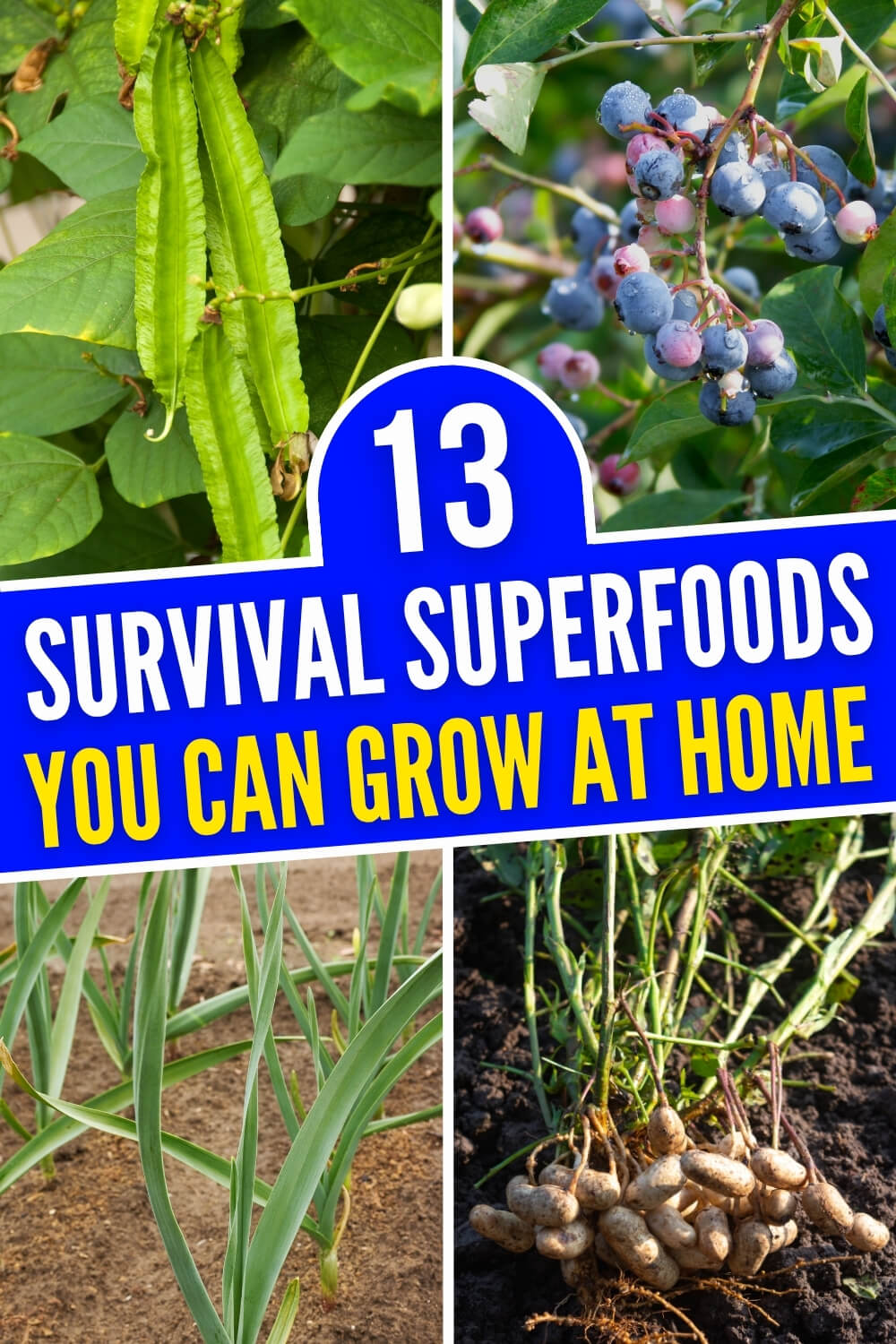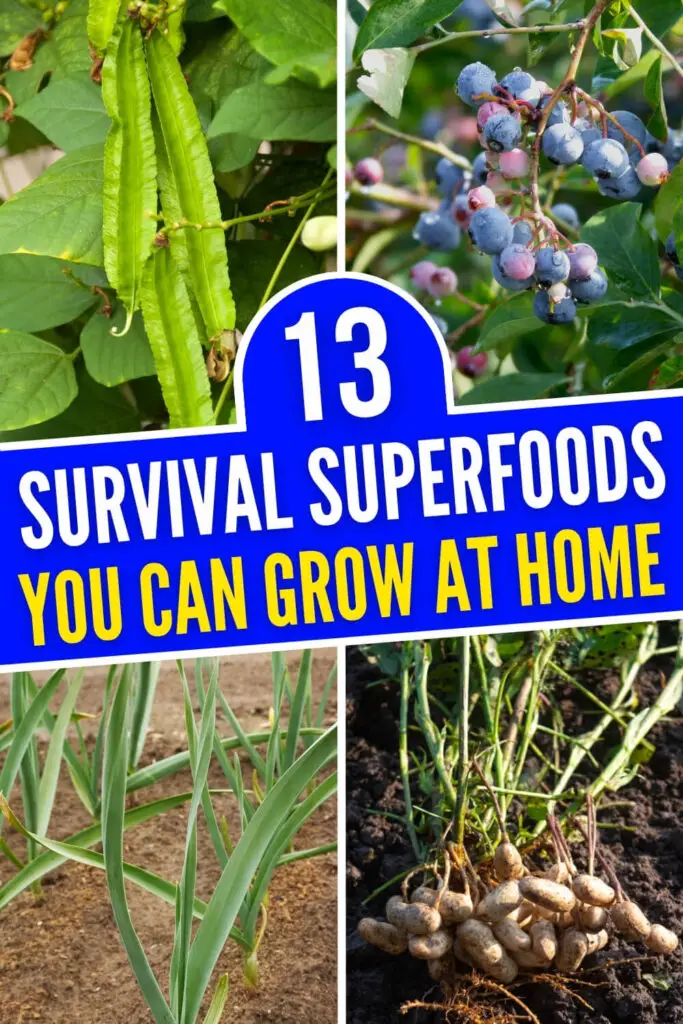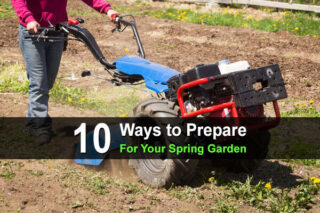Estimated reading time: 13 minutes
It took one good snowstorm and one long power outage for me to realize that I needed to be more prepared for emergencies. After that, I started to stock up on cheap foods: rice, spaghetti, as well as some survival rations. But what I realized is that although survival food will definitely help you survive, it isn’t necessarily healthy for you.
While I do have a good stash of these items on hand, I also look to balance them with healthy, survival superfoods. Long-term health in an emergency is just as important to survival as having easily accessible, emergency food.
If you are looking for some good preps, some survival food to keep on hand, check out some of these survival superfoods you should grow and stockpile.
Want to save this post for later? Click Here to Pin It On Pinterest!
Apples
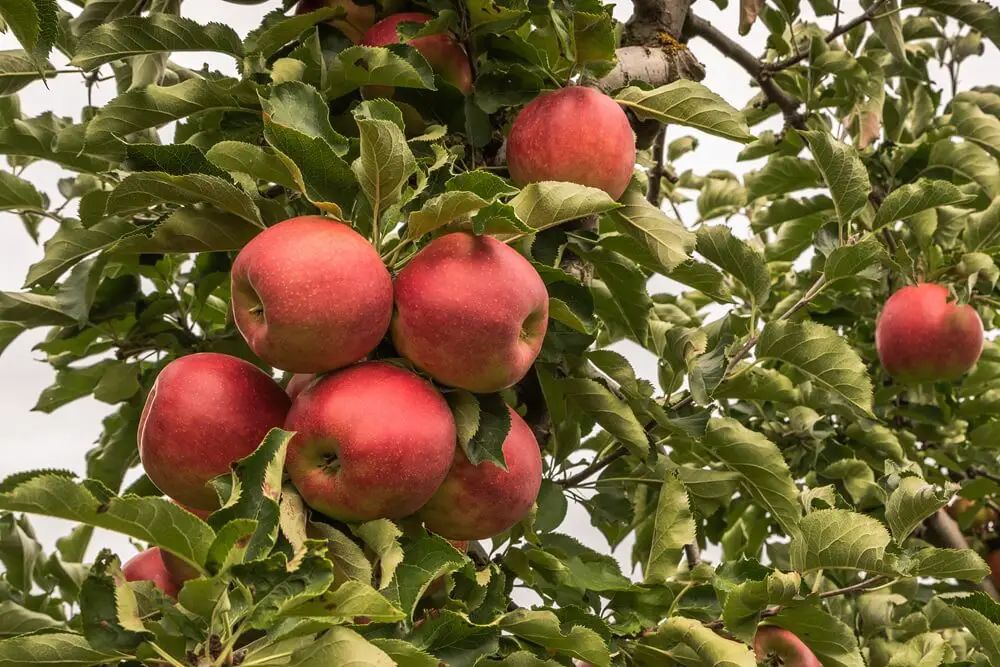
Apples are chock full of Vitamin C, Vitamin K, fiber, and healthy carbs. Any kind of apples can store for 3 months or more if stored properly, but thicker-skinned apples, such as Jonathans, seem to last the longest. Wrap apples individually in newspaper and store in a cardboard box in the basement or unheated porch, so long as they don’t freeze. Do not store apples in the same room as potatoes because potatoes cause them to spoil faster.
Apples with bruises can’t be stored long term, but they can be made into apple pie filling, which can be canned, or even hard cider or vinegar. If you don’t have a place to store fresh apples, you can purchase frozen apple slices or even freeze-dried apple slices to stockpile.
More Info: How to Grow an Apple Tree from Seed
Beans
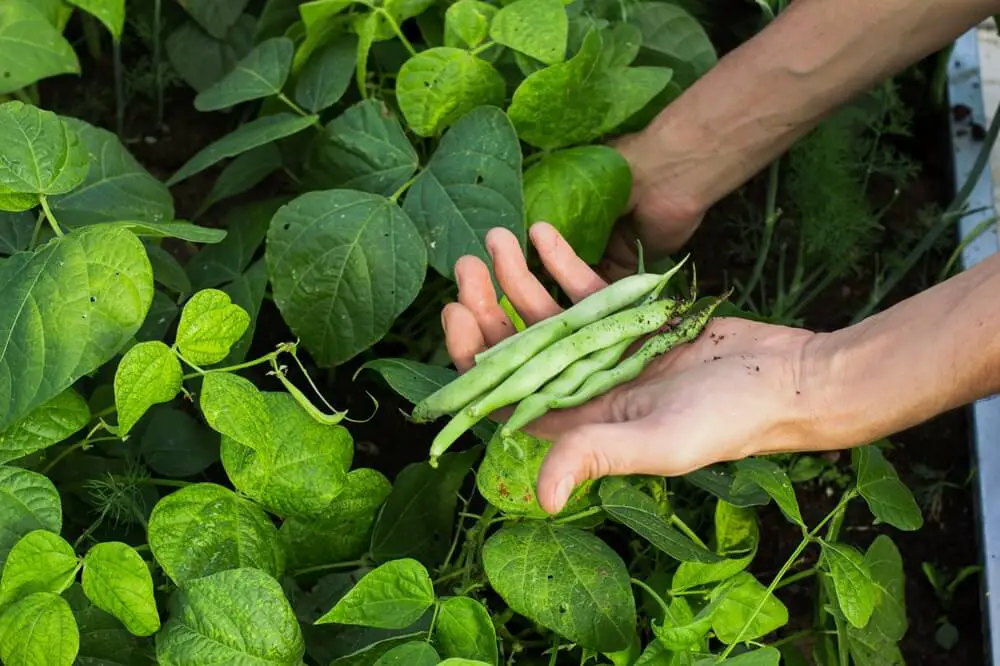
Beans are a great source of protein, calories, and fiber. You can purchase dried beans very inexpensively and stockpile them in your prepper pantry. Or you can grow them yourself and dry them to store or grow. Once your beans are dried, put them in a glass container with a lid or seal them into mylar bags. Keep them in a cool dry place and they will last at least one year and even up to 30 years.
If winter goes long and you need fresh vegetables, beans can be sprouted and eaten as bean shoots for some extra nutrition. Or you can grind them into flour for baking, cook them in soups, or use them in any number of recipes.
More Info: How to Grow Beans
Berries
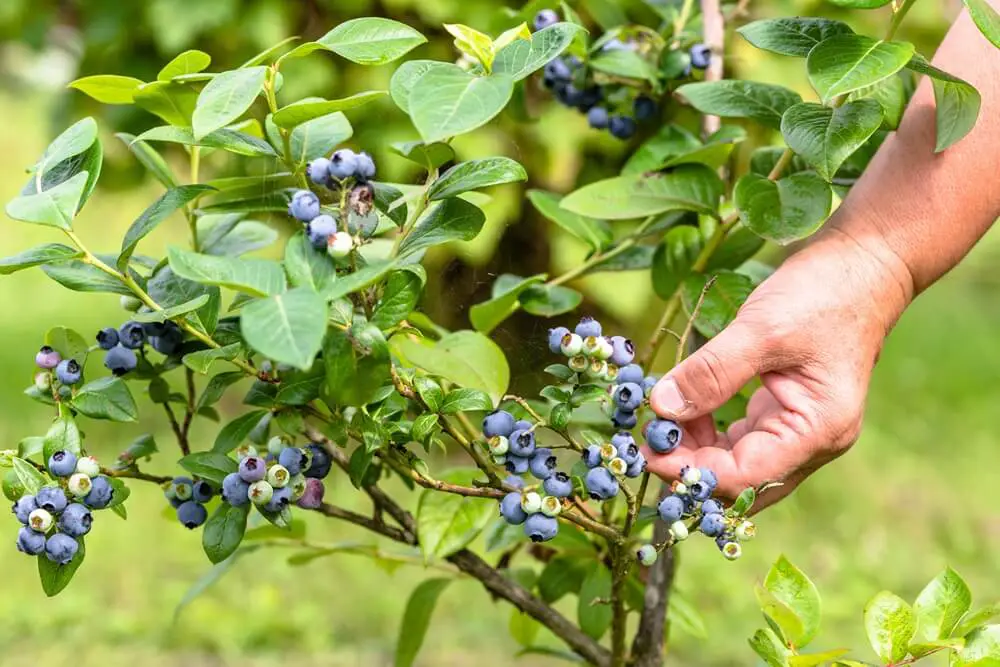
Summer is a great time to eat fresh berries such as blueberries, strawberries, raspberries, and blackberries. Wild raspberries grow all around my yard and taste delicious. Berries are full of antioxidants, vitamins, and minerals which promote good health and may prevent cancer. Berries can easily be frozen for future use or made into preserves and canned.
More Info: How to Grow and Harvest Blueberries
Garlic
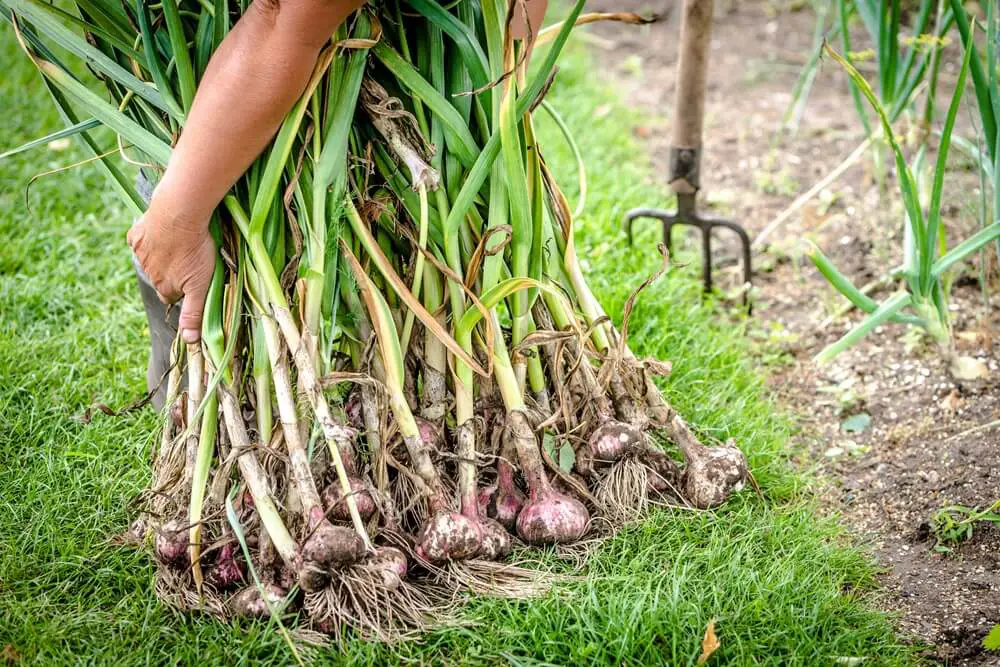
Garlic is a powerful survival superfood. It has antibacterial, antiviral, and antifungal properties, plus it helps boost your immune system, lowers blood pressure, and may even help reduce cholesterol levels. In an emergency, staying healthy and avoiding illness is just as important as having enough calories.
Garlic is incredibly easy to grow. In the fall, separate a bulb into cloves and plant them pointy side up about 2 inches deep. Cover with mulch and let nature do its work over the winter. Come spring, you’ll see shoots emerge, and by summer, you’ll be harvesting full bulbs.
After harvest, allow the bulbs to cure for a couple of weeks in a well-ventilated space. Properly cured garlic can last for 6 months or longer when stored in a cool, dry location.
If you don’t have room to grow garlic, you can also stockpile dehydrated garlic or garlic powder, both of which store well and keep their nutritional benefits.
More Info: How to Grow and Care for Garlic
Kale
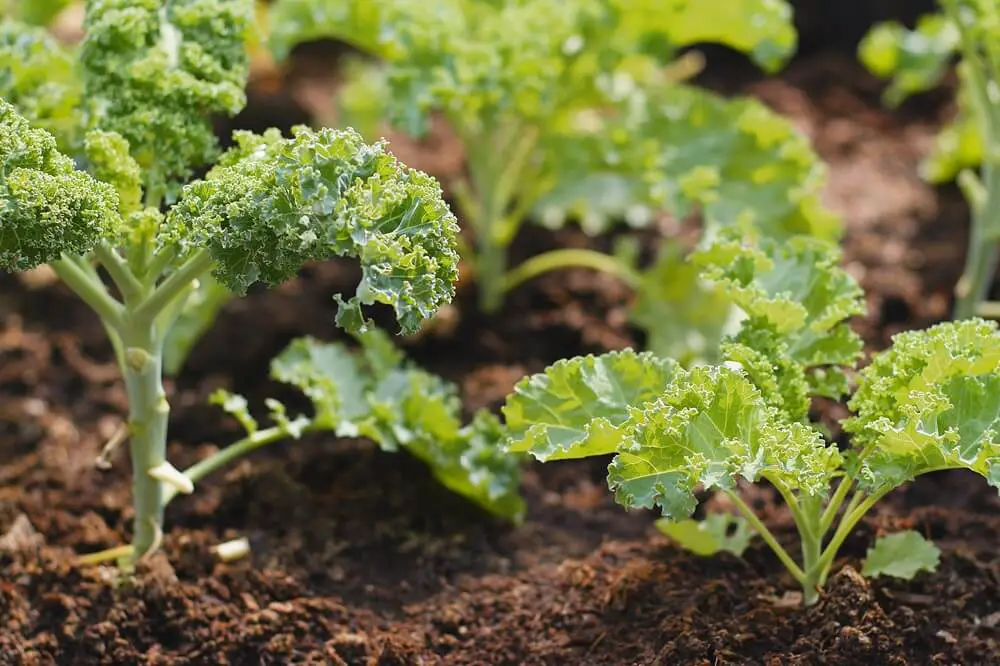
Kale is a great source of vitamins and minerals. You can purchase kale chips to stockpile, or you can grow a kale crop late in the season with the intention of overwintering it for healthy and hearty winter eating. Kale loves to be grown in cool weather. Starting it in late July means that it will mature by the first frost date.
Cold hardy kale can survive harsh winters in a greenhouse, or even covered over with a layer of straw or a row cover. More than once, I’ve dug kale out from under the snow to taste a delicious, sweet green. Kale will grow very slowly over the winter, but it will stay fresh and edible even in harsh conditions. A hard frost will make kale sweeter.
More Info: Growing Kale
Lentils
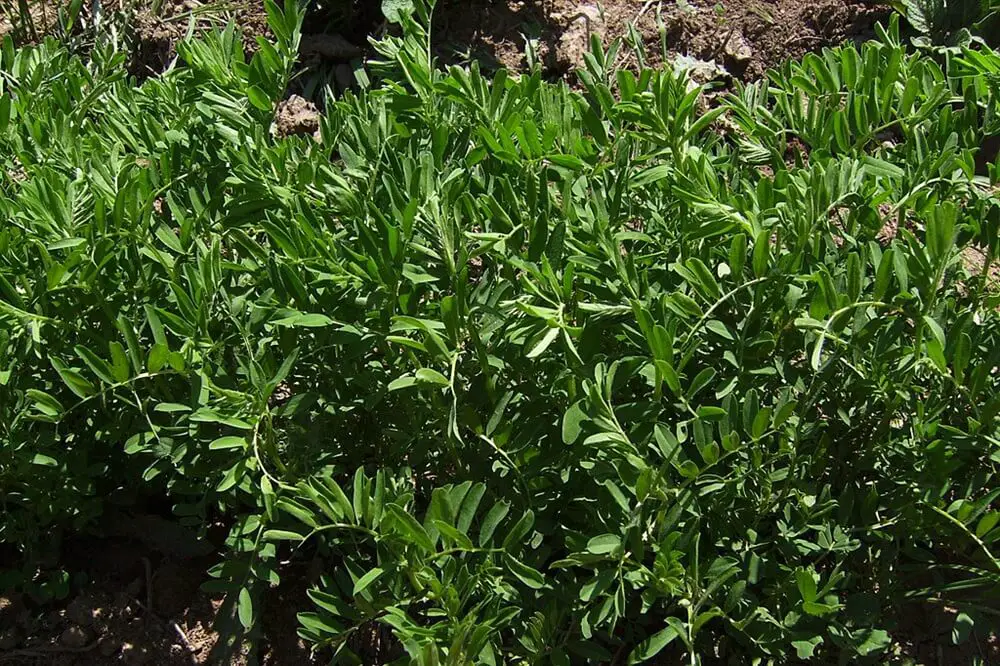
Lentils are another great plant-based protein option that’s perfect for long-term storage. They’re loaded with protein, fiber, iron, folate, and other nutrients that are crucial during stressful times when you may not have access to fresh meat or vegetables.
You can buy dried lentils in bulk and store them in sealed containers or mylar bags with oxygen absorbers. Properly stored, lentils can last up to 10 years or more. Lentils cook quickly compared to other dried legumes, making them a convenient food source when fuel is limited. You can add them to soups, stews, or sprout them for fresh greens in the winter.
Lentils are also fairly easy to grow if you want to produce your own supply, though they do best in cooler climates and well-drained soil.
More Info: How to Grow and Care for Lentils
Peanuts
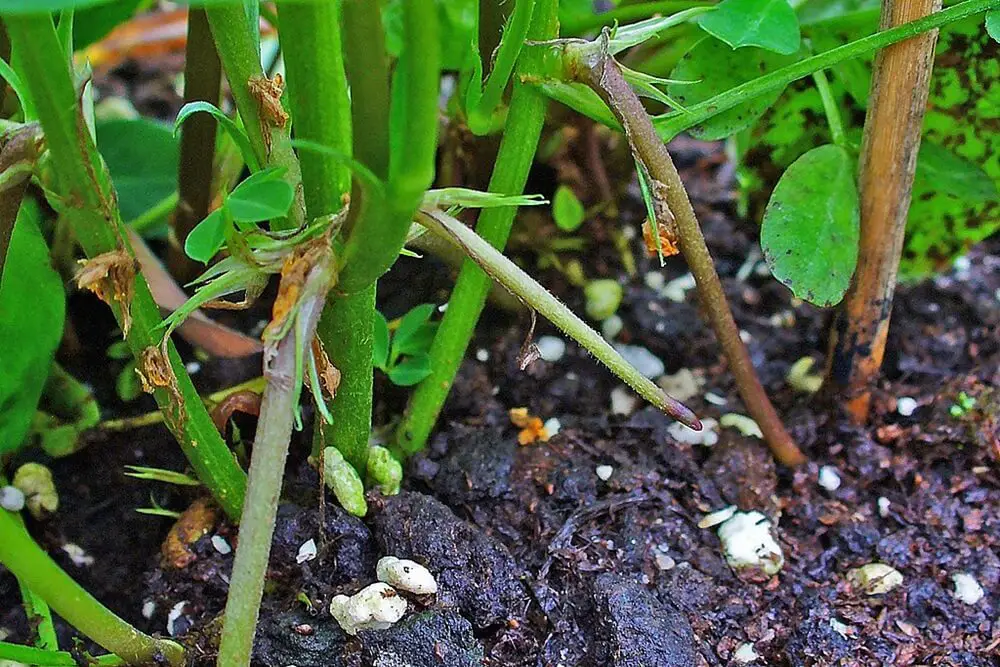
Peanuts are a fantastic source of protein, healthy fats, and calories—making them an excellent addition to any prepper pantry. They also contain magnesium, folate, Vitamin E, and resveratrol, which support heart health and may help lower inflammation. In an emergency, high-calorie, nutrient-dense foods like peanuts are especially valuable.
If you live in a warm climate, peanuts are fairly easy to grow. Plant raw, unsalted peanuts (still in their shells) after the last frost. They need sandy, well-drained soil and about 120-150 days to mature. As the plant grows, small yellow flowers will appear and eventually push into the soil where the peanuts develop underground. Harvest your peanuts once the leaves start to yellow. Gently pull up the whole plant and hang it to dry for a few weeks in a well-ventilated area.
After curing, remove the peanuts from the plant. You can roast them in the oven for long-term storage or keep them raw and store them in airtight containers in a cool, dry place. Properly stored, raw peanuts can last up to a year, while roasted peanuts should be used within 6 months for best quality. You can also grind peanuts into peanut butter, which stores well unopened and adds variety to your emergency food options.
More Info: How to Grow Peanuts
Spinach

Spinach is a fantastic cool-weather crop that’s loaded with iron, calcium, Vitamin K, Vitamin A, folate, and antioxidants. In an emergency, having access to fresh greens like spinach helps round out your nutrition and prevent deficiencies. Spinach grows quickly and can be harvested multiple times throughout the season using the “cut and come again” method.
You can start spinach early in the spring or late summer for a fall harvest. It can even survive light frosts, which makes it a reliable source of fresh food late into the season. Spinach does well in raised beds, containers, or traditional garden plots. Once harvested, you can eat it fresh, freeze it, or dehydrate it for long-term storage.
If you don’t have much space, spinach also grows well indoors under grow lights, giving you a year-round source of vitamins during power outages or harsh winters.
More Info: How to Plant and Grow Spinach
Sprouts
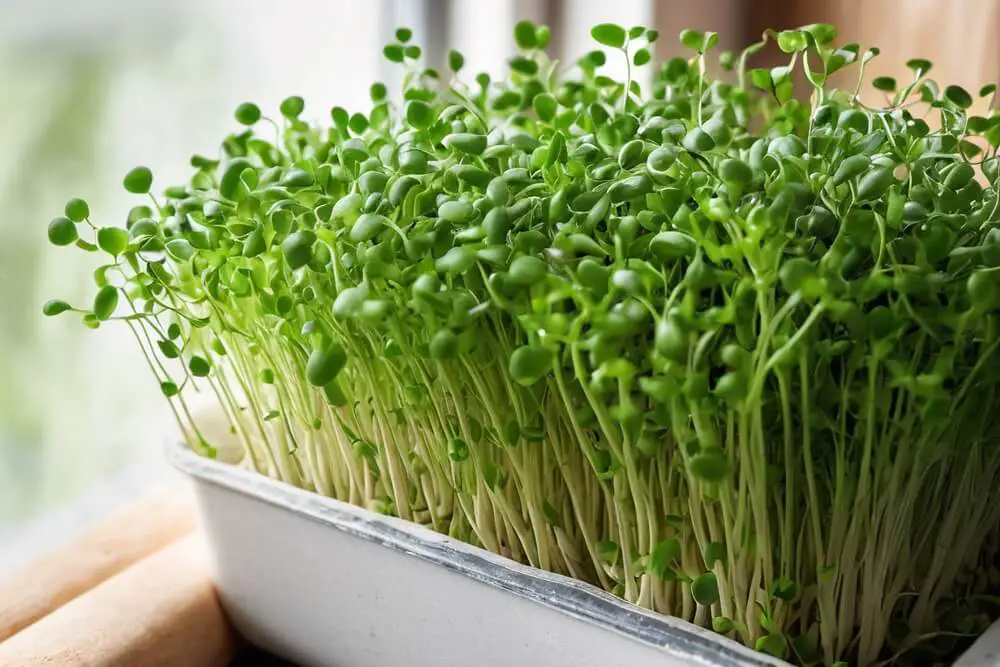
One concern in the wintertime is getting enough fresh vegetables, especially greens. Sprouts don’t need a lot of sunlight, they grow quickly, and they are jam-packed with nutrients. Sprouts provide Vitamins A, B, C, and E. They increase cell regeneration and protect your body from diseases.
Sprouts can’t really be stockpiled, but you can stockpile seeds to use for sprouting. Soak seeds overnight, then allow them to sprout on your countertop for two to five days and enjoy these tiny nutritional powerhouses.
More Info: The Ultimate Guide to Growing Sprouts
Sunflower Seeds
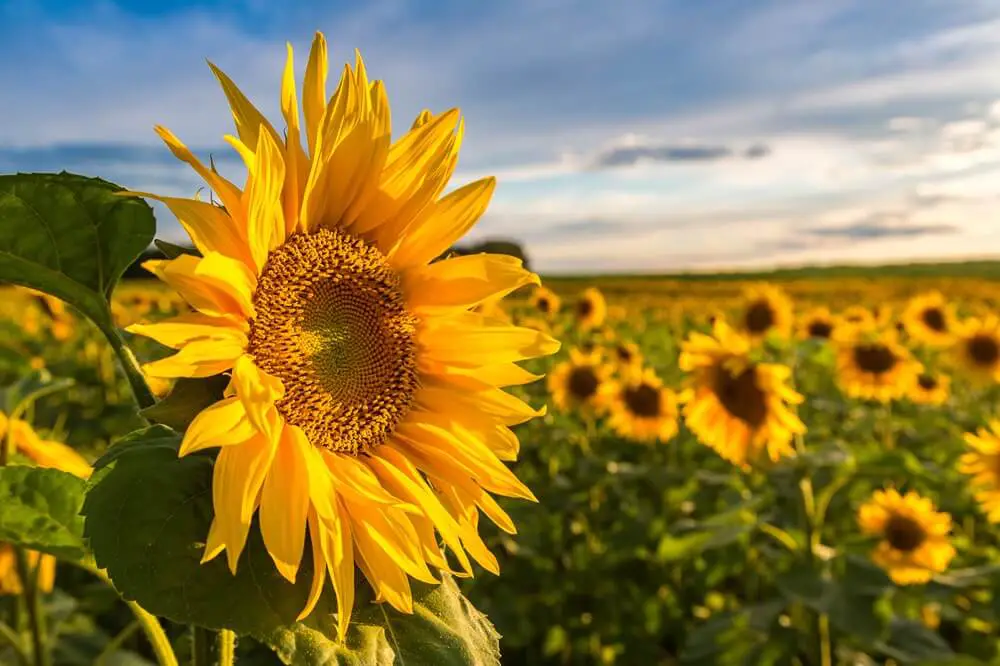
Sunflowers are hardy and easy to grow and produce a delicious and edible seed. The seeds are full of healthy fat, protein, calories, Vitamin B, Vitamin E, tryptophan, and folate. You can eat them, press them into oil for cooking, or save them to plant again.
Once your sunflower heads are starting to hang down, cut them off at the stalk and hang them upside down to finish drying. Carefully scrape all of the seeds out of the head and soak them in water overnight. Dry your seeds in the oven for half an hour at 325 degrees F. Store them in a glass jar in a cool, dry place. Sunflower seeds can last up to a year in the refrigerator.
More Info: How to Grow Sunflowers
Sweet Potatoes
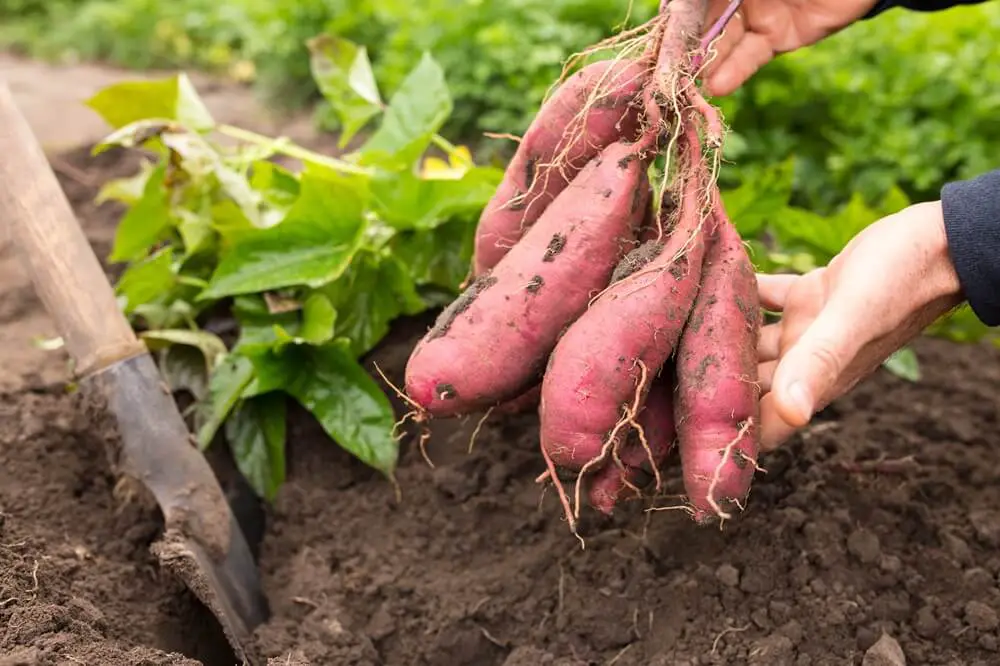
Sweet potatoes are high in Vitamin A, may help prevent cancer, and keep blood pressure low. Sweet potatoes are low on the glycemic index, making them a better choice for people with diabetes than white potatoes. These heart-healthy tubers are easy to grow and store well.
To grow sweet potatoes, cut a sweet potato in half and suspend the cut area in water with a couple of toothpicks. In a few weeks, it will sprout, and each sprout is called a slip. Gently pull off the slips and put them in water until they root. Once the slips are rooted, you can plant them in the garden. You’ll want to plant them in loose soil mixed with a bit of compost.
Harvest your sweet potatoes in the fall, right before frost. Carefully dig them up with a broadfork so you don’t bruise or cut the tubers. You’ll need to cure your sweet potatoes for 5 to 7 days at 90 degrees F and 85 percent humidity.
You can find more ways to cure and store sweet potatoes here. Stored correctly, they should last well into winter, giving you a stockpile of healthy food.
At any point, you can harvest and eat sweet potato leaves. Since they tend to be better, boiling them lightly is recommended. You can sauté them with onions or put them in a recipe in place of kale or spinach.
More Info: How to Grow Sweet Potatoes
Tomatoes

Who doesn’t love a fresh, juicy tomato still warm from the garden? These fruits are full of lycopene, Vitamin C, and Vitamin A. You can grow them in your garden for fresh eating, then you can or freeze the extras for use in sauces and soups.
If you don’t have the equipment to can tomatoes, you can buy already-canned tomatoes very inexpensively. Canned tomatoes will taste best if used by 18 to 24 months. However, they will likely stay safe enough to eat for even longer. This is a great food to grow and stockpile.
More Info: How to Grow Tomatoes
Winter Squash

If you have the space in your garden, winter squash is a great food to grow and store. Winter squash is a nutrient-dense food providing B vitamins, Vitamin A, Vitamin C, Calcium, Vitamin E, magnesium, and Omega 3s.
There are several varieties of winter squash, including hubbard, banana, acorn, butternut, and sweetmeat. These large, thick-rind squashes can last up to 6 months when properly cured and stored. They are easy to grow and easy to store. The downside of growing winter squash is that they take a long time to grow and mature and require a lot of space.
Plant winter squash in small hills like you would any squash. When they are ready for harvest in the fall, allow them to cure for ten to fourteen days. Elevate then on a mesh screen in a warm room with good airflow for proper curing. Once your squash are cured, you can store them in a cool dry place for months as long as the humidity does not get too high.
More Info: How to Grow Winter Squash
Other Foods
While you can purchase or grow and stockpile all of those foods, there are a few more nutritional foods you might consider keeping on your homestead for everyday use and to be prepared for emergencies.
For example, quail are an easy to grow source of protein. You can keep them indoors in a small cage if necessary. You can eat quail eggs and any extra roosters will make an excellent source of meat. If needed, you could feed them on food scraps for the winter.
Goats can be raised for milk or meat, giving you another source of healthy food on your homestead that is always available, in emergencies or not. Rabbits can be a source of protein and their manure is great fertilizer for your prepper garden. Putting a few ‘prep-steading’ systems in place that are simple and easy will help make your food stockpile more nutritious and delicious.
Regularly growing, preserving, and eating your own food helps you to be prepared for when you can’t make it to the grocery store. With a mix of emergency rations, prep-steading meals, and homegrown preserved food, you’ll be ready for a variety of emergencies with healthy, simple food.
Like this post? Don't Forget to Pin It On Pinterest!
You May Also Like:

